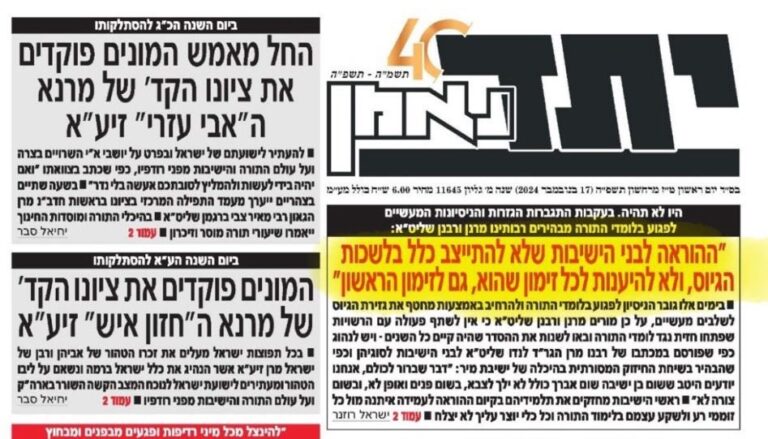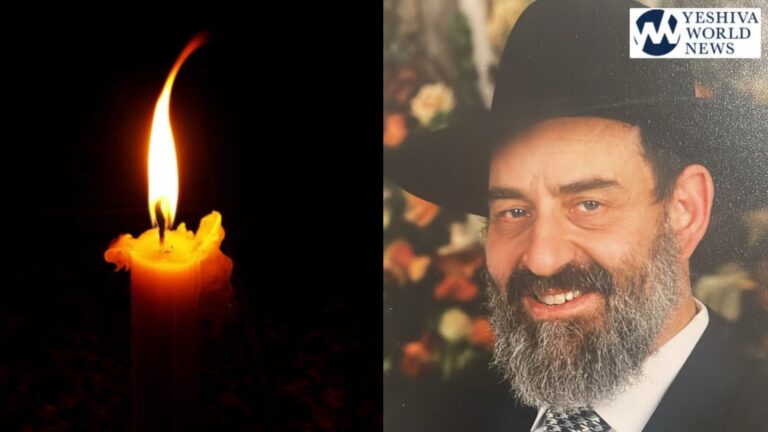 Siddur Kavonos HaAri ZT”L, a highly ornamented and illustrated rare manuscript from the year of 1756, written by the Kabbalist Rabbi Shlomo Rechnitz, was recently revealed in Jerusalem. The ancient siddur was written during the lifetime of the Baal Shem Tov and his disciples, when Kabbalistic intentions in tefilos began to spread, laying the foundation of the nussach HaAri – Sfarad which gradually developed to the Ashkenazi-Chassidic “Nussach Sfarad”. The unique siddur will be up for sale for in the Kedem Auction House in Jerusalem for an opening price of almost 20,000$.
Siddur Kavonos HaAri ZT”L, a highly ornamented and illustrated rare manuscript from the year of 1756, written by the Kabbalist Rabbi Shlomo Rechnitz, was recently revealed in Jerusalem. The ancient siddur was written during the lifetime of the Baal Shem Tov and his disciples, when Kabbalistic intentions in tefilos began to spread, laying the foundation of the nussach HaAri – Sfarad which gradually developed to the Ashkenazi-Chassidic “Nussach Sfarad”. The unique siddur will be up for sale for in the Kedem Auction House in Jerusalem for an opening price of almost 20,000$.
This siddur, named Shaare Tefilla – Siddur Kavonos HaAri, was made in an attractive and ornamental Ashkenazi writing, with illustrated title page. It was written by the Kabbalist sofer Rabbi Shlomo Rechnitz son of Rabbi Yehuda Leib Mochiach of Rechnitz (Rohonc). This Siddur has been carefully edited, which attests to deep knowledge of Kabbalistic wisdom and Kavonos HaAri. Rabbi Shlomo writes in the introduction that he copied the Kavonos and Yichudim from authorized manuscripts of the Ari. In several places in the manuscript, he notes variations and lacking in the manuscript from which he copied, like that of Maharam Papirash. Like other Arizal siddurim, the arrangement of prayers in this siddur differs from other siddurs.
The Siddur was written in attractive and decorative Ashkenazi handwriting, with red-framed pages and illustrated title page. The title page is particularly elaborate, with lavish hand-painted. On the right is the figure of Moshe holding the Aseres HaDibros and on the left is the figure of Aharon HaKohen adorned with the Cohen Gadol’s attire, with breastplate and apron, holding vessels of incense. At the bottom of the leaf are bases of pillars upon which Moshe and Aharon are standing topped by pointed. At the top of the leaf are two angels supporting a round leaf-adorned border framing the round inscription “Open for me the gates of justice, I shall enter them to thank G-d” surrounding the acronym for “This is the gate for G-d, the righteous shall enter it”. At the bottom of the leaf is the year of writing and acronyms hinting to the name of the copier, Shlomo.
This ancient Siddur unfolds the fierce polemic to the Ari’s Kabbalistic influence on the Siddur’s content, as part of the grave argument between chassidim and Misnagdim which broke out at the time. Already in 1772, 16 years after the initial making of this Siddur, wrote the “Zamir Aritsim ve’Charbot Tsurim”: “Our brethren of the Beit of Yisrael, did you not know ‘these are new who had recently come along which our ancestors had not known about’, creating [among us] a sect of suspicious ones…[who] make themselves separate associations and their religion is different than the rest of the people of Israel in the prayer version”. The Misnagdim rejected any changes to their ancestry custom of tefilla version, but at first the chassidim did not even respond to their claims. The over-adorned appearance of this Siddur probably came as a visual reply.
Nussach Sfarad is the name for various forms of the Jewish siddurim, designed to reconcile Ashkenazi customs with the kabbalistic customs of the Ari. Nussach Sfarad is used nearly universally by chasidim, as well as by some other Ashkenazi Jews. Some versions are nearly identical to nussach Ashkenaz, while others come far closer to nussach Edot Mizrach: most versions fall somewhere in between. All versions incorporate the customs of the Ari.
Meron Eran of the Kedem Auction House notes that: “This ancient and rare Siddur is one of the first Sfarad Siddurim ever to be created. Its vast ornamentation and the fact it was hand-written rather than printed along with it being one of the avant-garde chassidic changed introduced in Ashkenazi world in light of Ha-Ari’s influence pique much curiosity around this special and rare artifact”.
(YWN – Israel Desk, Jerusalem/Photo: Kedem Auction House)











One Response
Any relation to Shlomo yehuda Rechnitz?